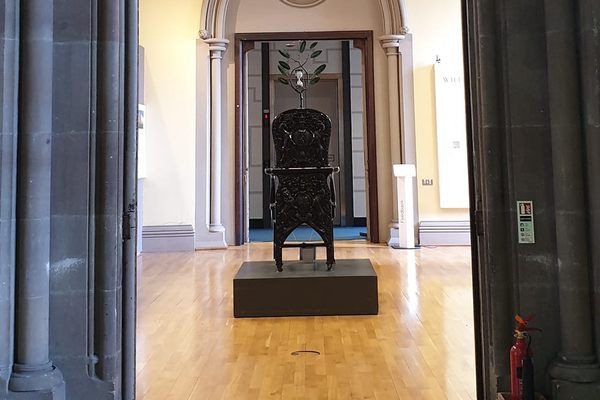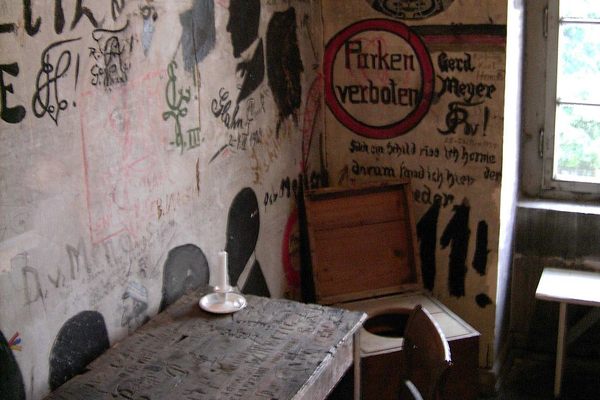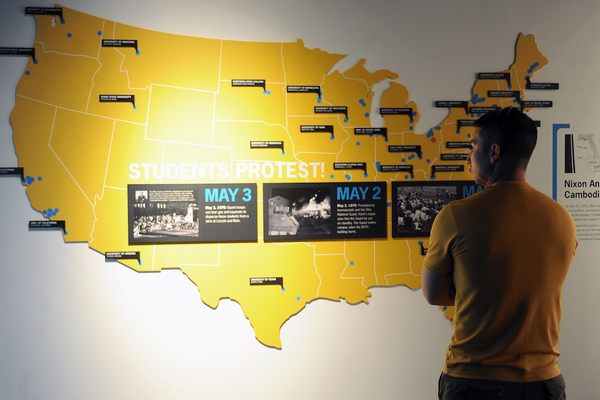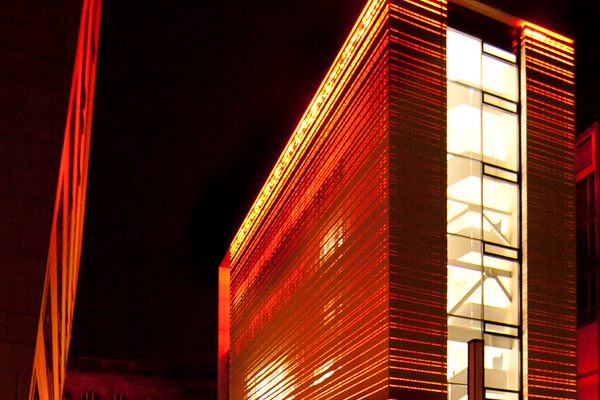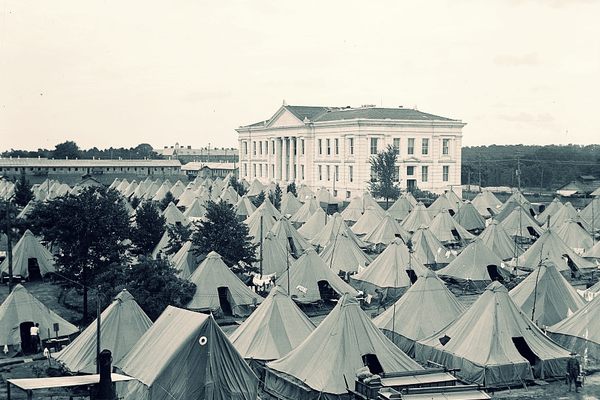About
Looking somewhat like a meteorite sitting on a pedestal, this stone is a memorial to the 1968 Tlatelolco Massacre. During the 1960s, and in 1968 particularly, massive student protests erupted around the world, from the United States to Czechoslovakia to Japan. Mexico was no different.
In 1968, protests in Mexico intensified ahead of when Mexico City was set to hold the Summer Olympics. At the time, students were protesting the government and police violence after riot police and army personnel killed several students at the National Preparatory School in San Ildefonso in an effort to end a violent student mob that erupted after a soccer game.
One of the main schools involved in the protests that followed was the National Autonomous University of Mexico (UNAM). (UNAM oversaw the National Preparatory School in San Ildefonso.) The university's chancellor, Javier Barros Sierra, was at the forefront of one of the first demonstrations held on August 1, 1968.
Led by Sierra, an estimated 80,000 people, mostly students, marched along Insurgentes Avenue in Mexico City. From UNAM's central campus in the city's southern volcanic rock fields, the pedregales, to the corner of Insurgentes and Félix Cuevas Street, the protesters marched for approximately 90 minutes.
Several months later, as protests continued to intensify, Mexico's president warned that "no more unrest will be tolerated." Shortly after the president's decree, the Mexican army seized control of UNAM and the National Polytechnic Institute.
Enraged, students called for a gathering to plan their movement's next steps on October 2, 1968, at Three Cultures Square. That evening, thousands of students congregated in the square. At the end of the meeting, army personnel arrived to arrest the movement's leaders. Gunshots soon broke out as soldiers opened fire upon the unarmed students.
The event, which unfolded 10 days before the Olympic opening ceremony in the city, became known as the Tlatelolco Massacre. For decades, no formal investigation was made to uncover the details of the massacre under Mexico's authoritarian rule.
Decades later, the United States declassified several documents relating to Mexico's 1968 protests. In 2000, President Vicente Fox was elected in Mexico, and Fox also vowed to investigate the massacre. Documents now prove that government soldiers fired the initial gunshots that ignited the massacre. However, little else was uncovered. Death tolls still range from 40 to 3,000.
Following the infamous Tlatelolco Massacre, the 1968 protests gained more political importance, and, 30 years after the UNAM March, this monument was unveiled on August 1, 1998.
A large rock taken from the pedregales was placed on a plinth. A plaque includes a few of Barros's quotes. The monument is known as La Piedra del 68 (The Stone of '68). Its placement represents how far north the University reached during the August protest, although it was eventually moved a few yards south as it stood in the way of the construction of the Metrobús running along Insurgentes Avenue.
Related Tags
Know Before You Go
Visible at all times since it is located on the sidewalk. The nearest Metrobús station is Félix Cuevas on line 1 (red), while the nearest Metro is Insurgentes Sur on line 12 (gold).
Community Contributors
Added By
Published
October 3, 2023
Sources
- https://www.npr.org/templates/story/story.php?storyId=97546687
- https://soysnte.mx/articulos/javier-barros-sierra-encabeza-la-manifestacion-con-mas-de-ochenta-mil-participantes
- https://gatopardo.com/estilo-de-vida/movimiento-estudiantil-de-1986/
- https://libreenelsur.mx/fotonota-el-monumento-a-la-piedra-del-68-grafiteado-y-usado-como-perchero-por-limpiaparabrisas-44-anos-despues/
- http://www.lessonsite.com/ArchivePages/HistoryOfTheWorld/Lesson31/Protests60s.htm













